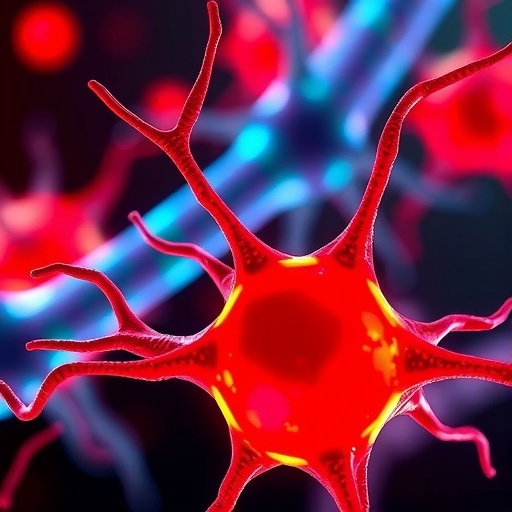In a groundbreaking advancement that could significantly alter the therapeutic landscape for amyotrophic lateral sclerosis (ALS), researchers have leveraged large-scale drug screening techniques on motor neurons derived from induced pluripotent stem cells (iPSCs) of sporadic ALS patients. This research represents one of the most comprehensive explorations to date into the pharmacological vulnerabilities of patient-specific neural cells, leading to the identification of a promising combinatorial therapy with the potential to modify disease course.
ALS, a devastating neurodegenerative disorder characterized by the progressive loss of motor neurons, has long eluded effective treatments, especially for sporadic cases where genetic underpinnings are ambiguous or absent. The conventional challenges in modeling sporadic ALS stem from the heterogeneous nature of the disease and the difficulty of accessing live, patient-specific motor neurons. The employment of iPSC technology overcomes these hurdles, enabling the derivation of motor neurons from patients’ somatic cells, thus faithfully recapitulating the molecular and phenotypic hallmarks of ALS in vitro.
In this study, the research team systematically generated and expanded iPSC-derived motor neurons from a broad cohort of sporadic ALS patients, ensuring a representative and clinically relevant sample set. This methodological choice allows for the encapsulation of patient-specific variability, a critical factor often missing in preclinical screens and which has impeded translational success in the past. The rigor of their approach is exemplified by the scale of their drug screening, which assessed thousands of compounds, encompassing a wide chemical diversity and mechanisms of action.
Utilizing high-content imaging and sophisticated electrophysiological assessments, the researchers meticulously evaluated each drug’s efficacy not only by measuring neuron survival but also by probing alterations in disease-related phenotypes such as cellular stress markers, axonal integrity, and synaptic function. This multifaceted evaluation framework ensured that candidate therapeutics were vetted through stringent functional readouts aligned with ALS pathology.
Strikingly, their exhaustive screen elucidated that no single drug dramatically reversed the ALS phenotype, underscoring the complexity and multifactorial nature of the disease’s progression. However, the team identified a potent combination of compounds that acted synergistically to confer neuroprotection, reduce pathological hallmarks, and restore cellular homeostasis. This combinatorial therapy included agents targeting oxidative stress pathways, mitochondrial dysfunction, and aberrant protein aggregation—pathogenic processes intimately linked to motor neuron degeneration.
Mechanistically, the team’s analyses revealed that while each drug in the combination only partially ameliorated specific dysfunctions, their concurrent application resulted in amplified rescue effects. This finding aligns with a growing paradigm in neurodegeneration research that advocates for multi-target approaches, reflecting the intricate and interconnected pathways driving neuronal death. Their findings challenge the traditional one-drug-one-target philosophy and pave the way toward precision polypharmacology strategies for ALS.
The translational implications are substantial. By validating these results across multiple patient-derived lines exhibiting diverse genetic and clinical backgrounds, the study brings us closer to personalized medicine in ALS. The combinatorial therapy could be tailored to individual patient profiles, thereby addressing the heterogeneity that otherwise confounds therapeutic efficacy in clinical trials.
Further enhancing its relevance, the researchers incorporated extensive transcriptomic and proteomic profiling to dissect the molecular signature shifts induced by the treatment. These data not only corroborated the phenotypic outcomes but also highlighted novel pathways modulated by the drug combination, uncovering new targets for future therapeutic intervention. Importantly, these omics analyses provided biomarkers for monitoring treatment responses, a crucial component in the clinical translation pipeline.
The study also underscores the indispensable role of patient-derived models in drug discovery for neurodegenerative diseases. Traditional animal models and immortalized cell lines have been notoriously poor predictors of human clinical outcomes, largely due to species differences and lack of patient-specific disease phenotypes. By contrast, iPSC-derived neurons faithfully recapitulate human-specific cellular context and pathology, offering a powerful platform for high-fidelity drug screening.
Moreover, the large scale nature of this screening effort marks a technical and logistical feat, demonstrating that iPSC-based platforms can be feasibly adapted for comprehensive drug discovery initiatives. The integration of automation, standardized differentiation protocols, and advanced analytical pipelines facilitated the throughput and reproducibility essential for robust compound filtering.
Beyond the immediate impact on ALS therapeutics, this study exemplifies a broader shift toward leveraging patient-specific cellular models combined with systems-level pharmacological assessments to tackle complex brain disorders. The approach embodies the convergence of stem cell biology, high-content screening technology, and computational biology, forging new pathways for deciphering disease mechanisms and identifying effective therapies.
As ALS clinical trials to date have been hampered by failure to translate preclinical insights into meaningful patient benefit, the discovery of a synergistic drug combination represents a hopeful inflection point. It emphasizes that addressing neurodegeneration may require simultaneous modulation of multiple pathogenic processes rather than isolated targets.
Looking ahead, the researchers advocate for rigorous preclinical validation using in vivo models and eventual progression to clinical trials to evaluate safety, pharmacokinetics, and efficacy in human subjects. They also note the importance of stratifying patients based on molecular phenotypes to maximize therapeutic responsiveness and minimize adverse effects.
This landmark research underscores the powerful potential of harnessing the biological complexity inherent in patient-derived motor neurons to systematically interrogate pharmacological landscapes. The identification of a combinatorial therapy capable of mitigating motor neuron degeneration brings new optimism to patients and clinicians confronting the relentless challenge posed by sporadic ALS, lighting a promising path toward transformative treatments.
Subject of Research:
Large-scale drug screening in iPSC-derived motor neurons from sporadic ALS patients and investigation of potential combinatorial therapeutic strategies.
Article Title:
Large-scale drug screening in iPSC-derived motor neurons from sporadic ALS patients identifies a potential combinatorial therapy.
Article References:
Bye, C.R., Qian, E., Lim, K. et al. Large-scale drug screening in iPSC-derived motor neurons from sporadic ALS patients identifies a potential combinatorial therapy. Nat Neurosci (2025). https://doi.org/10.1038/s41593-025-02118-7
Image Credits:
AI Generated
DOI:
https://doi.org/10.1038/s41593-025-02118-7




